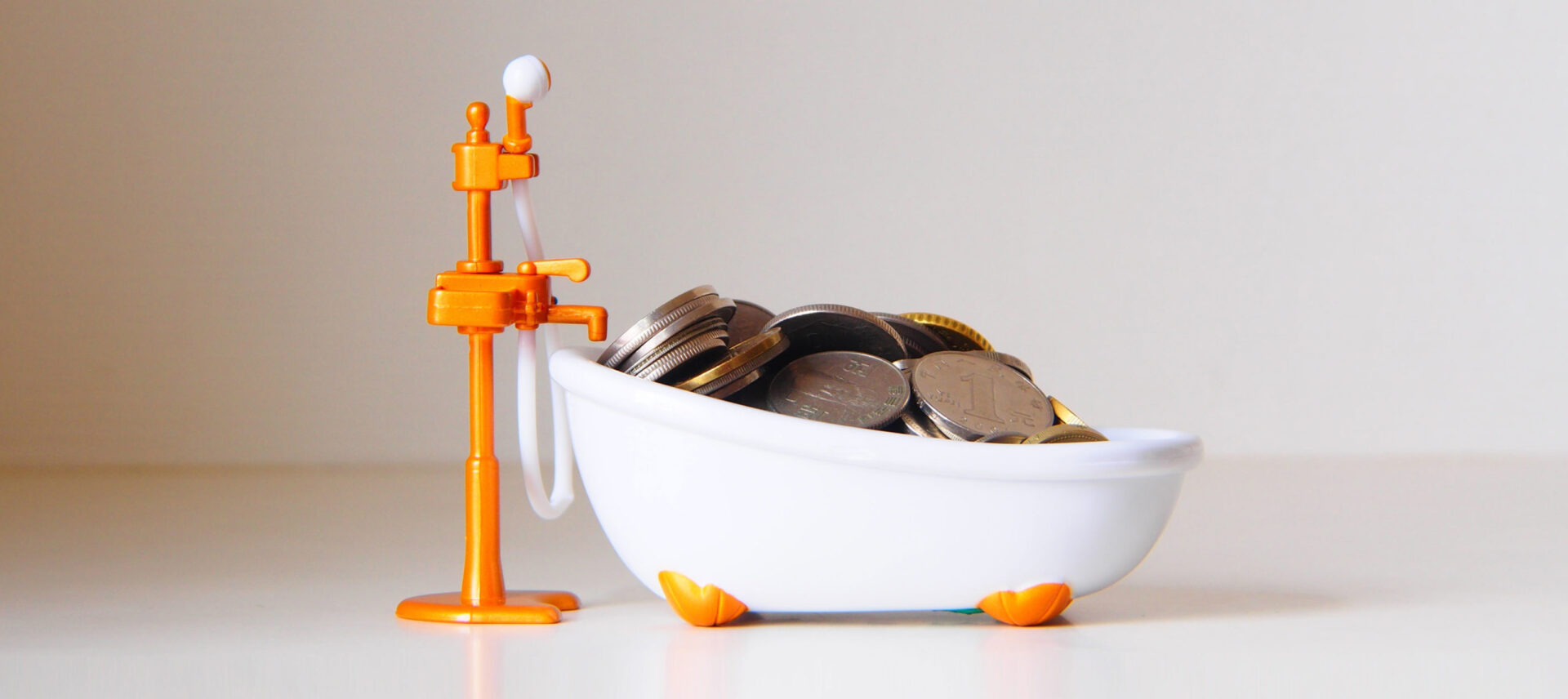
Article
The Bathtub of Value
R&D investment will make or break your business. That's why it's critically important to spend the right amount at the right time on the right things during product development.
It’s not how much you spend on product development that’s important. It’s how the money is spent that counts the most. If exceptional return on investment (ROI) could be guaranteed merely by spending more, then those with the most to spend would always have the greatest success. Yet many companies spend extravagantly on product development with mediocre results. Others spend next to nothing by comparison and dominate their markets. How can this be?
While there are many dynamics that determine product success, one critical factor is how, where, and when companies invest in product development. The “secret” to how consistently successful companies achieve their results can be described by adapting the “bathtub curve” to product development spending.
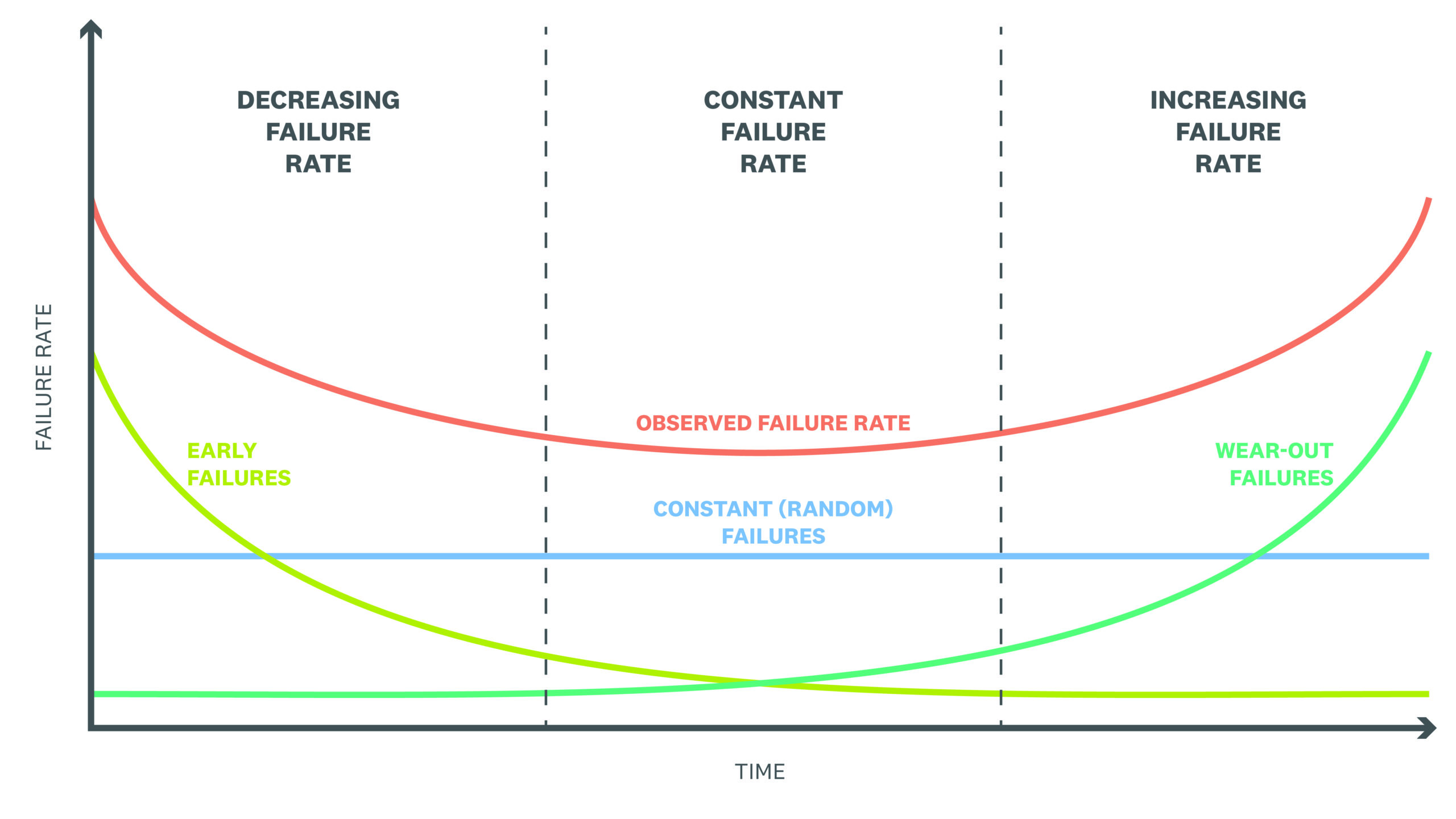
The Bathtub Curve and Product Failure Behavior
The bathtub curve is used by reliability engineers as a tool to predict product failure rates. As shown in figure 1, the curve is the result of three different forces that combine over the life of a product to create the composite “bathtub” shape. The important concept behind the graph is that these forces affect the product in distinctive ways at different times during the product’s life.
This approach can be mapped to the product development process and used to evaluate product development investment to maximize ROI.
Using the Bathtub Curve to Evaluate ROI Over the Four Phases of Product Development
The reliability bathtub curve concept can be used to evaluate ROI impact over the product development process by substituting an ROI value for failure rates in the chart. The chart then shows the impact of each unit of investment at each stage of the product development process.
The Four Phases of Product Development
- Strategy phase: discovers the need for a product and defines the strategy for creating it and delivering it to the market.
- Concept phase: takes the results of the strategy phase and determines the optimal form that the products should take.
- Development phase: takes the product defined in the concept Phase, designs it, validates the design, and introduces it into the supply chain for manufacture.
- Revenue phase: is where you market, build, sell, and support the the product.
Investment Patterns during Product Development
Investment increases substantially as the product moves toward the revenue phase. Over the first three phases, 80% of the calendar time and 90% of the effort are usually spent on the development phase. The small remainder is split between the Strategy and Concept Phases.
Investment in the revenue phase, (manufacturing, selling and supporting a product) will increase with the amount of product sold. Figure 2 provides an example of this.
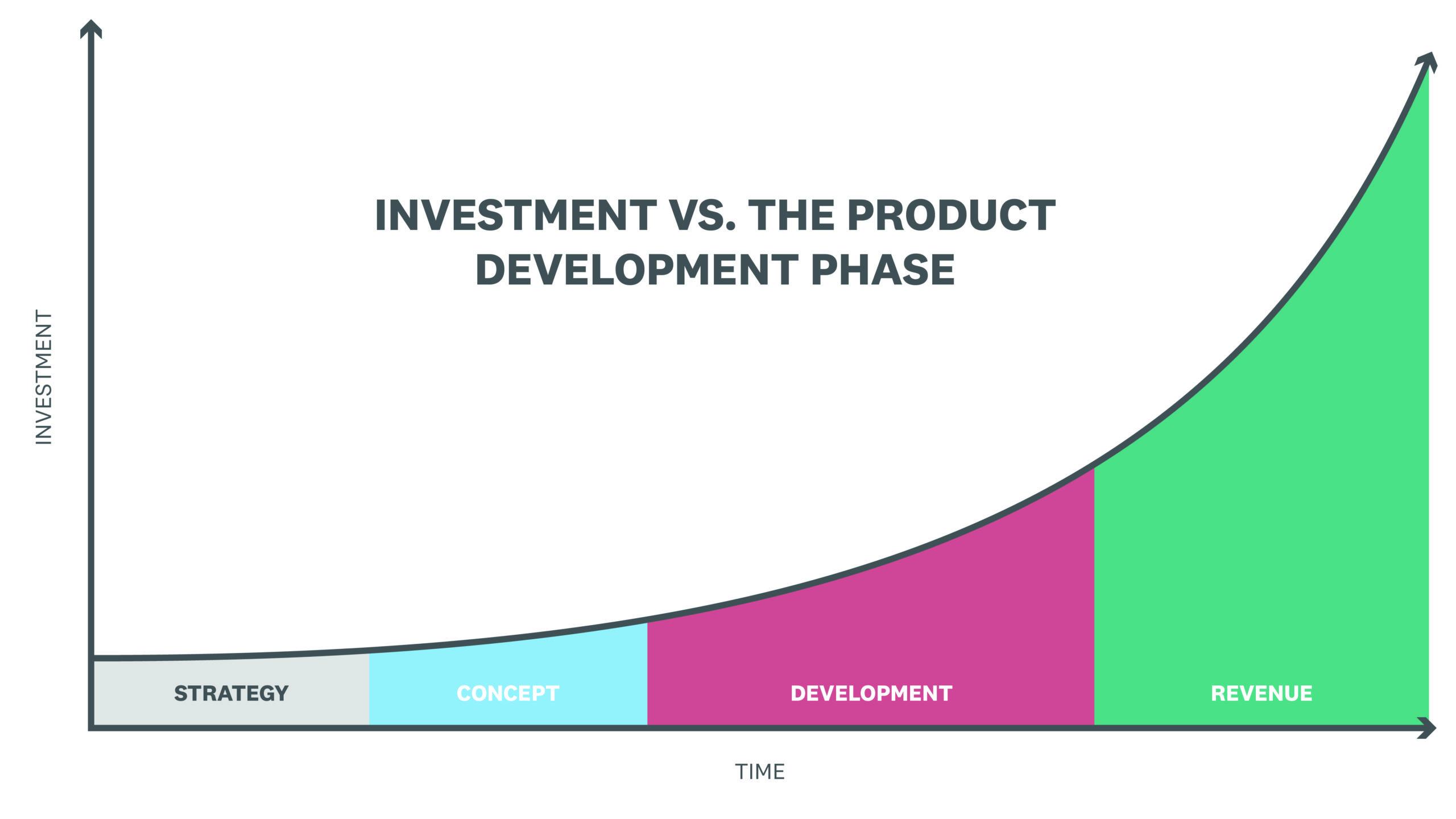
ROI for the Strategy, Concept, and Development Phases
In absolute terms, product development investment increases over time as shown in figure 2. However, not all investment is equal. As shown in figure 3, the most impact to success comes from the Strategy and Concept Phases. Yet the cost of those phases is minor when compared to the investment required in the other two phases. In other words, the ROI for the Strategy and Concept phases is much greater than the ROI for the Development phase.
The reason for this is quite simple: The Strategy and Concept phases are where the critical decisions are made which impact everything downstream. Much like navigating a spacecraft to the moon, minor changes in course at the very beginning can be the difference between achieving lunar orbit (success) and heading into the void. The later a course correction is applied, the more fuel (investment) is required. In other words, the same result may be achieved, but it will come at a much higher cost and significantly lower ROI.
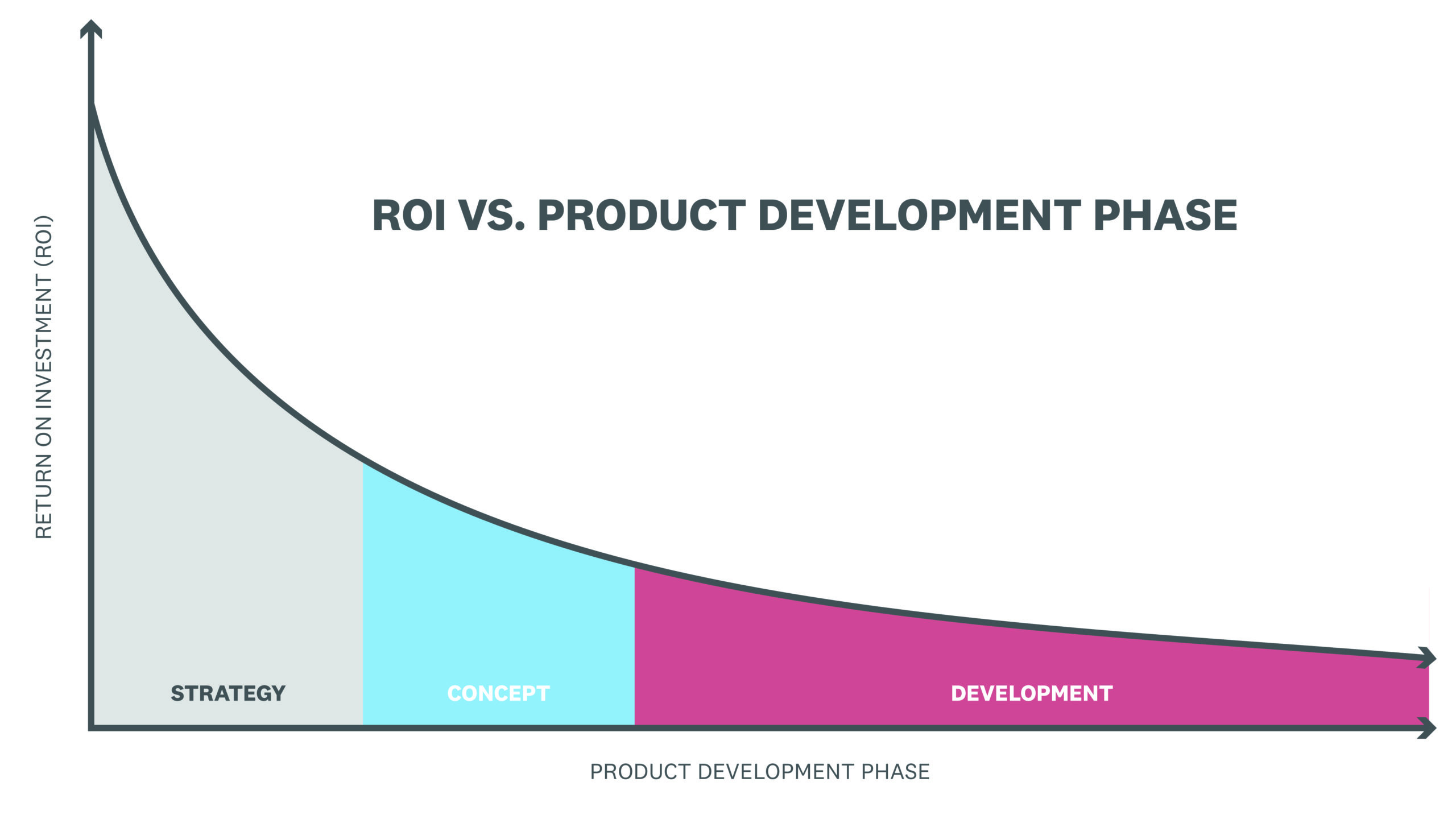
ROI During the Revenue Phase
If the product development phases are executed perfectly, then the revenue phase won’t require additional development. Profitability is merely a matter of reproducing the product in volume and delivering it to customers. However, we don’t live in a perfect world. Components go obsolete. Sometimes there are errors in the product design that are not caught during test and validation. There are occasional supplier quality problems.
The result of these imperfections is that some level of development investment will always be required during the Revenue Phase. What is the ROI of this investment?
The best way to evaluate this question is to look at the impact of not making the investment when it’s needed. Simply put, the result is a reduced capability to deliver and support the product. In some cases this can result in a survival issue for the manufacturer. If the problems are not corrected, revenue can be drastically reduced and your business can come to an unexpected end. Planning for and ensuring appropriate product development investment during this phase is critically important.
Putting it all Together: The Bathtub of Value
Much like the reliability bathtub curve in figure 1, different and distinct factors determine the ROI of investments made during product development. In the early phases, the combination of research and strategic thought with low relative cost delivers extremely high ROI. As the product transitions through development to revenue, the ROI decreases due to the large investments that must be made to support the development phase activities. ROI increases once again during the Revenue phase. Relatively small investments in product development during the revenue phase will maintain your revenue stream at an optimally profitable level.
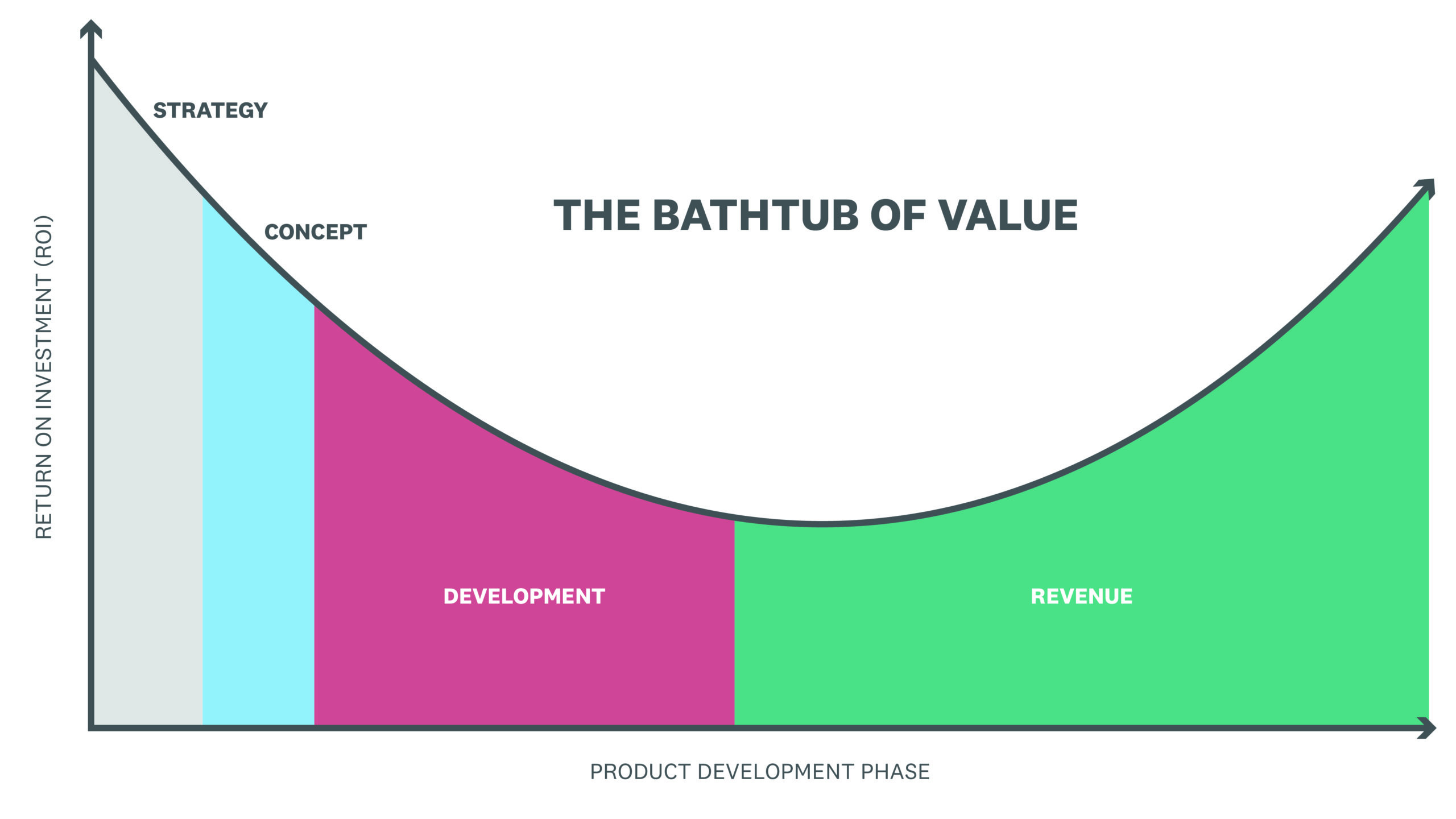
The Secret to Optimal Product Development ROI: Invest Wisely at the Right Time
The bathtub of value is a tool that can be used to help you apply your product development investment in an optimal way. Invest too little during the strategy and concept phases, and the development phase will become more expensive (due to the inefficiencies inherent in discovering product needs while designing the product). Spend too little during the Revenue phase, and you might just go out of business.
Remember, successful market leaders know that it’s not how much you spend on product development, but how well you spend it.





